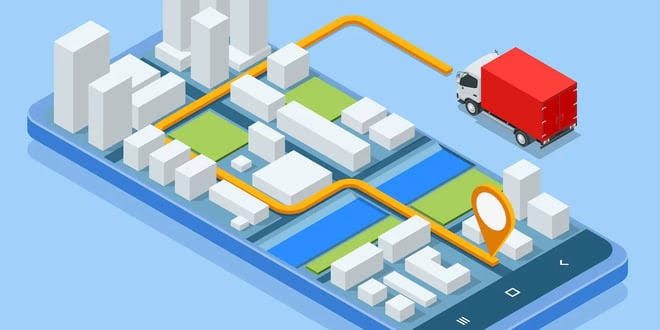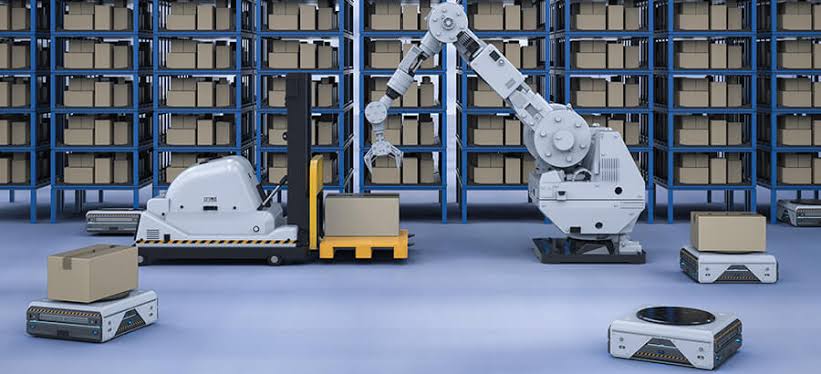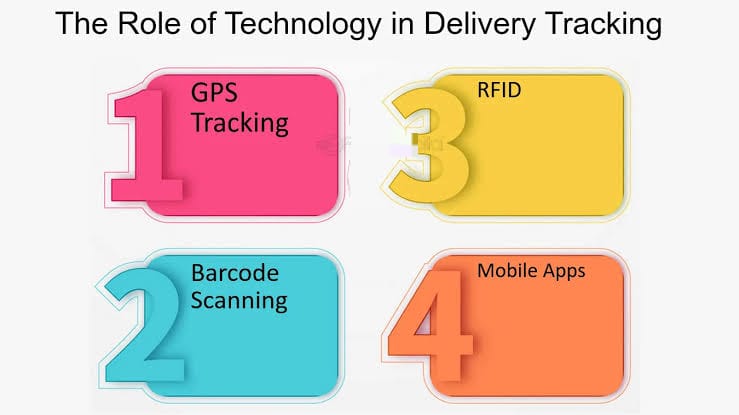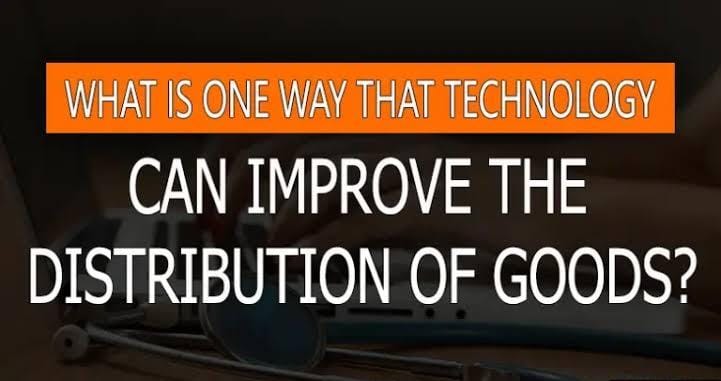The distribution of goods is a fundamental aspect of modern economies, encompassing the processes involved in transporting products from producers to consumers. This intricate system ensures that goods reach their intended destinations efficiently and reliably, catering to diverse consumer demands across various geographic locations.
Effective distribution of goods hinges on several key factors, including transportation infrastructure, logistical planning, inventory management, and technological integration. At its core, distribution logistics involve the movement and storage of goods throughout the supply chain.
This journey typically begins at production facilities or warehouses where products are manufactured or stored in bulk. From these points, goods embark on a journey that may involve multiple stages of transportation, such as trucks, trains, ships, or planes, depending on the distance and nature of the shipment.
Each mode of transport plays a crucial role in bridging the gap between suppliers and consumers, ensuring timely delivery while minimizing costs and environmental impact. Moreover, the distribution of goods is a process not merely about physical movement but also encompasses crucial managerial tasks.
These include inventory control to manage stock levels effectively, order processing to facilitate smooth transactions, and warehousing to provide temporary storage and consolidation points along the supply chain. An efficient distribution of goods system optimizes these processes to meet consumer demands promptly, thereby enhancing customer satisfaction and fostering long-term business relationships.
In recent years, advancements in technology have revolutionized the distribution of goods, offering innovative solutions to streamline operations and overcome traditional logistical challenges. One significant way technology improves distribution is through the implementation of sophisticated supply chain management (SCM) systems.
These integrated platforms leverage data analytics, machine learning, and real-time monitoring to enhance decision-making and optimize the flow of goods. By analyzing historical trends and current demand patterns, SCM systems enable businesses to forecast consumer needs accurately and adjust inventory levels accordingly, minimizing stockouts and excess inventory.
Furthermore, the advent of digital platforms and e-commerce has reshaped consumer expectations and distribution strategies alike. Online marketplaces and direct-to-consumer models have reduced reliance on traditional retail channels, prompting businesses to adopt agile distribution networks capable of fulfilling orders rapidly and cost-effectively.
Technologies such as automated order fulfillment systems, RFID tracking, and autonomous vehicles further accelerate the distribution process, reducing lead times and operational costs while improving overall service reliability.
Additionally, the integration of Internet of Things (IoT) devices within supply chains offers real-time visibility into asset location, condition, and performance. IoT-enabled sensors monitor environmental factors like temperature and humidity during transit, ensuring product integrity and compliance with regulatory standards.
Such granular insights empower logistics providers to proactively address potential disruptions and optimize delivery routes, thereby enhancing operational efficiency and customer satisfaction. Moreover, advancements in transportation technologies, including electric and autonomous vehicles, promise to revolutionize last-mile delivery—a critical component of the distribution process.
Electric trucks and drones offer sustainable alternatives to conventional fossil fuel-powered vehicles, reducing carbon emissions and operating costs while improving urban air quality. Similarly, autonomous delivery solutions hold the potential to expedite order fulfillment in congested urban areas, leveraging AI-powered algorithms to navigate complex environments safely and efficiently.
Furthermore, blockchain technology has emerged as a transformative tool for enhancing transparency and security within supply chains. By creating immutable records of transactional data, blockchain enables stakeholders to track the provenance and authenticity of goods throughout their lifecycle. This decentralized approach mitigates the risk of fraud and counterfeiting while optimizing regulatory compliance and facilitating cross-border trade.
The Current Challenges in the Distribution of Goods and How Can Technology Address Them?

1. Inventory Management
Inventory management is crucial for ensuring businesses maintain optimal stock levels to meet customer demand while minimizing carrying costs and stockouts. Traditional methods often struggle to adapt to fluctuations in demand, supply chain disruptions, and the complexities of global markets.
Technology Solution: AI-powered inventory management systems revolutionize how businesses handle their stock. By analyzing vast amounts of historical sales data, current market trends, and external factors such as seasonal variations or economic conditions, AI can generate accurate demand forecasts.
These forecasts enable businesses to optimize their inventory levels, ensuring they have enough stock to meet demand without overstocking. This optimization not only improves cash flow by reducing excess inventory but also enhances customer satisfaction through reliable product availability.
2. Transportation Optimization
Efficient transportation is essential for timely deliveries and cost-effective operations. However, challenges such as route planning, fuel costs, traffic congestion, and regulatory compliance pose significant obstacles.
Technology Solution: IoT (Internet of Things) sensors and GPS tracking systems provide real-time visibility into transportation operations. These technologies gather data on vehicle location, speed, fuel consumption, and environmental conditions.
AI algorithms then analyze this data to optimize delivery routes, minimize fuel usage, and predict maintenance needs. By leveraging AI-driven route optimization, businesses can reduce transportation costs, improve delivery times, and enhance overall logistics efficiency.
3. Last-Mile Delivery
Last-mile delivery refers to the final stage of delivering goods from distribution centers to the end customer’s doorstep. It is often the most expensive and time-consuming part of the supply chain, especially in urban areas with dense populations and complex logistics.
Technology Solution: Autonomous delivery vehicles and drones represent cutting-edge solutions to streamline last-mile delivery. These technologies can navigate urban environments more efficiently than traditional vehicles, avoiding traffic congestion and optimizing delivery routes in real-time.
AI algorithms enable these vehicles to make decisions autonomously, ensuring safe and timely deliveries while reducing operational costs. By adopting autonomous delivery solutions, businesses can improve delivery speed, reduce labor costs, and enhance customer satisfaction.
4. Warehousing and Storage
Efficient warehousing and storage management are critical for optimizing space utilization, minimizing handling costs, and ensuring accurate order fulfillment.
Technology Solution: Robotics and automation are transforming warehouse operations by automating repetitive tasks such as picking, packing, and sorting. Automated guided vehicles (AGVs) and robotic arms work collaboratively with human operators to streamline operations and increase throughput.
AI-powered warehouse management systems optimize inventory placement, layout design, and workflow management to maximize storage capacity and minimize errors. By integrating robotics and AI, businesses can achieve higher operational efficiency, reduce labor costs, and improve order accuracy in their warehouses.
5. Supply Chain Visibility
Maintaining real-time visibility across the supply chain is essential for identifying and resolving issues promptly, minimizing disruptions, and improving overall efficiency.
Technology Solution: Blockchain technology offers a decentralized and transparent approach to supply chain management. By creating an immutable ledger of transactions and product movements, blockchain enhances transparency and traceability throughout the supply chain. Businesses can track the provenance of goods, verify authenticity, and ensure compliance with regulatory standards.
Blockchain also facilitates seamless collaboration between supply chain partners by securely sharing information and automating contract execution through smart contracts. By leveraging blockchain technology, businesses can enhance supply chain visibility, mitigate risks, and build trust with stakeholders.
6. Environmental Impact
Transportation and logistics activities contribute significantly to carbon emissions and environmental degradation, presenting sustainability challenges for businesses.
Technology Solution: Electric vehicles (EVs) and alternative fuels offer sustainable alternatives to traditional fossil fuel-powered vehicles. EVs reduce carbon emissions and lower operating costs while promoting environmental stewardship.
Additionally, IoT sensors and environmental monitoring technologies optimize storage conditions for perishable goods, reducing waste and minimizing environmental impact. By embracing sustainable transportation solutions and leveraging IoT for environmental monitoring, businesses can achieve their sustainability goals, comply with regulatory requirements, and enhance their corporate social responsibility initiatives.
7. Data Security and Cybersecurity
As supply chains become increasingly digitized, protecting sensitive data and guarding against cyber threats is paramount for safeguarding business operations and maintaining customer trust.
Technology Solution: Advanced cybersecurity measures, including encryption, secure cloud platforms, and AI-driven threat detection systems, protect against data breaches and cyberattacks. Secure communication protocols and access controls ensure that sensitive information remains confidential and integrity is maintained throughout the supply chain. By implementing robust cybersecurity measures, businesses can mitigate risks, prevent unauthorized access, and preserve the integrity of their supply chain operations.
8. Scalability and Flexibility
Adapting distribution networks to accommodate business growth, market fluctuations, and changing customer demands requires flexibility and agility.
Technology Solution: Cloud computing offers scalable and flexible IT infrastructure that supports dynamic business needs. Cloud-based solutions enable businesses to scale operations, integrate new technologies, and respond quickly to market changes without significant upfront investment in hardware or infrastructure.
Additionally, AI-driven analytics provide insights into market trends, customer preferences, and operational efficiencies, enabling businesses to make data-driven decisions and optimize supply chain strategies. By leveraging cloud computing and AI, businesses can enhance scalability, improve agility, and maintain competitive advantage in a rapidly evolving marketplace.
9. Customer Expectations
Rising consumer expectations for fast, reliable, and transparent delivery present challenges for traditional distribution methods.
Technology Solution: E-commerce platforms and mobile applications provide real-time updates on order status, delivery schedules, and product availability. AI-driven chatbots and virtual assistants enhance customer service by providing personalized recommendations, answering inquiries, and resolving issues promptly. By leveraging digital platforms and AI-powered customer engagement tools, businesses can exceed customer expectations, build brand loyalty, and differentiate themselves in the marketplace.
10. Regulatory Compliance
Adhering to local and international regulations regarding product safety, environmental standards, and labor practices is essential for avoiding penalties and maintaining business integrity.
Technology Solution: AI analytics and blockchain technology automate compliance monitoring and auditing processes throughout the supply chain. AI algorithms analyze data to ensure regulatory compliance, identify potential risks, and recommend corrective actions.
Blockchain creates transparent and tamper-proof records of regulatory compliance, facilitating audits and regulatory reporting. By leveraging AI and blockchain technology, businesses can streamline compliance efforts, reduce administrative burdens, and demonstrate commitment to ethical business practices.
Read Also: How to Find the Best Marketing Jobs Around You
How Can Automation Technology Streamline the Distribution of Goods?

Using drones and robotics in the distribution of goods offers numerous benefits that enhance efficiency, speed, accuracy, and cost-effectiveness across various industries. This article explores the advantages of utilizing drones and robotics distribution of goods, highlighting their impact on logistics, supply chain management, customer service, and overall business operations.
1. Enhanced Efficiency and Speed
One of the primary benefits of using drones and robotics in the distribution of goods is enhanced efficiency and speed. Drones and AGVs can operate autonomously, reducing the need for human intervention and streamlining processes. They can navigate through warehouses, distribution centers, and even congested urban areas more quickly and efficiently than traditional methods.
Automated systems minimize delays, optimize routing, and ensure timely delivery of goods, thereby improving overall operational efficiency. In logistics and supply chain management, speed is critical for meeting customer expectations and maintaining competitive advantage.
Drones equipped with advanced sensors and GPS technology can deliver goods swiftly over short distances, bypassing traffic congestion and infrastructure limitations. This capability is particularly valuable for last-mile delivery, where rapid delivery times are essential for customer satisfaction and cost-effective operations.
2. Precision and Accuracy in Delivery
Drones and robotics contribute to precision and accuracy in the distribution of goods. Advanced algorithms and sensors enable drones and AGVs to navigate precisely and avoid obstacles in real time. This precision reduces errors in picking, packing, and sorting goods, minimizing the risk of damaged or misplaced items during transit.
Automated systems can handle fragile or sensitive products with care, ensuring that goods arrive at their destination intact and in optimal condition. Furthermore, robotics enhance accuracy in inventory management and order fulfillment.
Automated warehouse systems use barcode scanning, RFID (Radio Frequency Identification), and computer vision technologies to track inventory levels accurately. This real-time visibility enables businesses to maintain optimal stock levels, reduce stockouts, and improve inventory turnover rates. By ensuring accurate order fulfillment, drones and robotics enhance customer satisfaction and loyalty.
3. Cost-Effectiveness and Operational Savings
Cost-effectiveness is a significant benefit of integrating drones and robotics into the distribution of goods processes. While initial investments in drone technology and robotics systems may be substantial, the long-term operational savings justify the expense.
Automated systems reduce labor costs associated with manual handling, sorting, and transporting goods. They operate efficiently around the clock, minimizing idle time and maximizing productivity. In warehousing operations, robotics optimize space utilization through compact storage solutions and efficient goods retrieval mechanisms.
AGVs can transport goods within warehouses or distribution centers without the need for extensive infrastructure modifications. This flexibility reduces operational costs associated with facility maintenance and space rental, contributing to overall cost savings. Moreover, drones offer cost-effective solutions for last-mile delivery, particularly in remote or hard-to-reach areas.
Traditional delivery methods incur higher fuel and labor costs, especially for small, urgent deliveries. Drones can deliver lightweight packages quickly and directly to customers, reducing transportation costs and improving delivery efficiency. Cost-effective delivery options enhance profitability and competitiveness in the e-commerce and retail sectors.
4. Scalability and Flexibility
Drones and robotics provide scalability and flexibility to adapt to evolving business needs and market demands. Automated systems can handle fluctuating order volumes and seasonal peaks without compromising efficiency or service quality. Scalable warehouse automation solutions allow businesses to expand operations seamlessly by adding robotic units or drones as needed.
Flexibility is crucial in responding to dynamic market conditions and customer preferences. Robotics enable agile response times in fulfilling orders, adjusting inventory levels, and optimizing delivery routes based on real-time data analytics. Drones offer flexible delivery options, enabling businesses to offer same-day or on-demand delivery services that meet customer expectations for speed and convenience.
5. Safety and Risk Reduction
Safety is a paramount concern in the distribution of goods, and drones and robotics contribute to mitigating risks associated with manual labor and transportation. Automated systems operate with precision and consistency, reducing the likelihood of accidents and injuries in warehouses and distribution centers.
They adhere to strict safety protocols and regulations, ensuring compliance with occupational health and safety standards. In addition to physical safety, drones enhance security in the distribution of goods by monitoring inventory, detecting anomalies, and preventing theft or unauthorized access.
Robotics equipped with surveillance cameras and sensors provides real-time surveillance of warehouse operations, improving overall security measures. Enhanced safety and security protocols instill confidence among employees, customers, and stakeholders, fostering a safer working environment and protecting valuable assets.
6. Innovation and Competitive Advantage
The adoption of drones and robotics fosters innovation and drives competitive advantage in the marketplace. Businesses that embrace technology-driven solutions for the distribution of goods differentiate themselves from competitors by offering faster, more reliable, and cost-effective services.
Innovation in logistics and supply chain management enhances operational efficiency and responsiveness to customer demands, positioning companies as industry leaders. Moreover, technological advancements in drones and robotics continue to evolve, offering opportunities for continuous improvement and innovation.
Research and development in artificial intelligence (AI), machine learning, and sensor technology enable drones and AGVs to perform increasingly complex tasks autonomously. These innovations expand the possibilities for automated goods distribution across diverse industries, from retail and e-commerce to healthcare and manufacturing.
7. Environmental Sustainability
Drones and robotics contribute to environmental sustainability by reducing carbon emissions and environmental impact associated with the distribution of goods. Electric-powered drones produce fewer emissions compared to traditional delivery vehicles, supporting eco-friendly transportation initiatives.
Automated systems optimize delivery routes, minimize fuel consumption, and reduce traffic congestion in urban areas. Furthermore, robotics improve energy efficiency in warehouse operations by optimizing lighting, heating, and cooling systems based on occupancy and activity levels.
Sustainable warehouse practices, coupled with automated systems, contribute to lower energy consumption and operational carbon footprint. As businesses prioritize environmental responsibility, drones, and robotics play a crucial role in achieving sustainability goals and reducing environmental impact.
Read Also: How to Use a Finance Forecast for Better Financial Growth
What Role Does Real-time Tracking Technology Play in Improving the Distribution of Goods?

Real-time tracking technology plays a pivotal role in transforming the distribution of goods by enhancing visibility, efficiency, accountability, and customer satisfaction throughout the supply chain.
1. Enhancing Supply Chain Visibility and Transparency
One of the primary benefits of real-time tracking technology is its ability to enhance supply chain visibility and transparency. Traditionally, supply chain visibility was limited to periodic updates and checkpoints, leading to uncertainties and delays in identifying potential disruptions or bottlenecks.
Real-time tracking technology provides continuous updates on the movement, location, and status of goods as they move through different stages of the supply chain. GPS-enabled trackers and IoT sensors embedded in shipments transmit data on location, temperature, humidity, and other environmental conditions in real time.
This real-time visibility enables logistics managers to monitor inventory levels, track shipments across multiple transportation modes, and anticipate delivery times accurately. By accessing up-to-date information, businesses can proactively address issues such as delays, route deviations, or unexpected events, minimizing disruptions and optimizing supply chain performance.
2. Improving Operational Efficiency and Accuracy
Real-time tracking technology improves operational efficiency and accuracy in the distribution of goods processes. Automated data collection and continuous monitoring reduce manual data entry errors, streamline documentation processes, and improve inventory management accuracy.
RFID tags and barcodes enable automated scanning and identification of goods at various checkpoints, ensuring accurate tracking and traceability throughout the supply chain. Moreover, real-time tracking technology enhances operational efficiency by optimizing route planning and vehicle utilization. AI-driven algorithms analyze real-time data on traffic conditions, weather forecasts, and delivery priorities to optimize delivery routes dynamically.
This proactive approach reduces transportation costs, minimizes fuel consumption, and enhances delivery speed and reliability. By leveraging predictive analytics, businesses can anticipate demand patterns, optimize inventory levels, and improve resource allocation, further enhancing operational efficiency across the supply chain.
3. Enabling Just-In-Time Inventory Management
Real-time tracking technology facilitates just-in-time (JIT) inventory management practices by providing accurate insights into inventory levels and demand fluctuations. IoT sensors and RFID tags continuously monitor inventory levels in warehouses, distribution centers, and retail stores, triggering automated replenishment orders based on real-time consumption patterns.
JIT inventory management minimizes excess inventory holding costs, reduces stockouts, and improves inventory turnover rates. Furthermore, real-time tracking technology supports demand-driven supply chain strategies by synchronizing production schedules with real-time sales data and customer demand forecasts.
This synchronization ensures that businesses maintain optimal inventory levels and respond promptly to changing market conditions and consumer preferences. By aligning supply with demand in real-time, businesses can enhance agility, reduce lead times, and capitalize on market opportunities more effectively.
4. Enhancing Customer Service and Satisfaction
Real-time tracking technology plays a crucial role in enhancing customer service and satisfaction by providing visibility and transparency throughout the order fulfillment process. Customers expect timely updates on order status, delivery schedules, and any potential delays or issues.
Real-time tracking technology enables businesses to communicate proactively with customers, providing accurate information on shipment progress and anticipated delivery times. Automated notifications and alerts keep customers informed about order milestones, such as order confirmation, shipment dispatch, and delivery arrival.
This proactive communication reduces customer inquiries, improves satisfaction levels, and builds trust and loyalty. By offering real-time tracking capabilities, businesses demonstrate commitment to customer-centric service and responsiveness, enhancing overall brand reputation and competitive advantage in the marketplace.
5. Facilitating Regulatory Compliance and Security
Real-time tracking technology facilitates regulatory compliance and enhances security in the distribution of goods. Industries such as pharmaceuticals, food and beverage, and aerospace require adherence to strict regulatory standards for product safety, traceability, and temperature control.
IoT sensors and RFID tags monitor environmental conditions, such as temperature and humidity, during transportation and storage, ensuring compliance with regulatory requirements. Moreover, real-time tracking technology enhances security measures by monitoring the integrity and whereabouts of high-value or sensitive shipments.
GPS-enabled trackers and geo-fencing capabilities provide real-time alerts for unauthorized deviations from designated routes or security breaches. This proactive monitoring reduces the risk of theft, tampering, or loss of goods, safeguarding valuable assets and ensuring the integrity of supply chain operations.
6. Challenges and Considerations
Despite its numerous benefits, real-time tracking technology poses certain challenges and considerations for implementation in the distribution of goods. The initial investment in technology infrastructure, including IoT devices, GPS trackers, and data analytics platforms, can be substantial.
Businesses must evaluate the cost-benefit ratio and ROI (Return on Investment) of deploying real-time tracking solutions based on their operational needs and strategic objectives. Data privacy and cybersecurity concerns are critical considerations in real-time tracking technology implementation.
Businesses must ensure compliance with data protection regulations and implement robust cybersecurity measures to safeguard sensitive information and prevent unauthorized access or data breaches. Secure data encryption, access controls, and regular security audits are essential for protecting confidential data and maintaining trust with stakeholders.
Furthermore, interoperability and integration with existing IT systems and supply chain management software pose integration challenges. Compatibility issues between different tracking technologies and data formats may require standardization and seamless integration to ensure data accuracy and consistency across the supply chain.
7. Future Trends and Innovations
The future of real-time tracking technology in the distribution of goods is poised for continuous evolution and innovation. Advancements in AI, machine learning, and predictive analytics will further enhance the capabilities of real-time tracking systems to predict demand patterns, optimize supply chain operations, and automate decision-making processes. AI-driven insights will enable businesses to proactively identify opportunities for process improvements, cost savings, and operational efficiencies.
IoT-enabled smart sensors and wearable devices will expand real-time tracking capabilities to monitor additional parameters, such as product quality, shelf-life, and environmental conditions, in real-time. These advancements will support sustainable practices by minimizing waste, reducing carbon footprint, and optimizing resource utilization throughout the supply chain.
Moreover, the integration of blockchain technology with real-time tracking systems will enhance transparency, traceability, and accountability in supply chain transactions. Blockchain-enabled smart contracts and digital ledgers will streamline documentation processes, automate compliance checks, and facilitate secure, transparent transactions between stakeholders.
In conclusion, technology plays a pivotal role in improving coordination and communication within distribution networks by enhancing supply chain visibility, optimizing inventory management, streamlining logistics operations, facilitating collaboration, and improving customer service.
By leveraging digital platforms, AI-driven analytics, IoT-enabled devices, and advanced communication tools, businesses can enhance operational efficiency, reduce costs, and deliver superior service to customers. While challenges such as integration complexities, data security concerns, and technology investments exist, the benefits of technology adoption outweigh these challenges.
As technology continues to evolve, future innovations in AI, IoT, blockchain, and autonomous technologies will drive continuous improvements in distribution networks, enabling businesses to adapt to changing market dynamics, capitalize on emerging opportunities, and achieve sustainable growth in a competitive global marketplace.
Read Also: How to Grow Your Business






